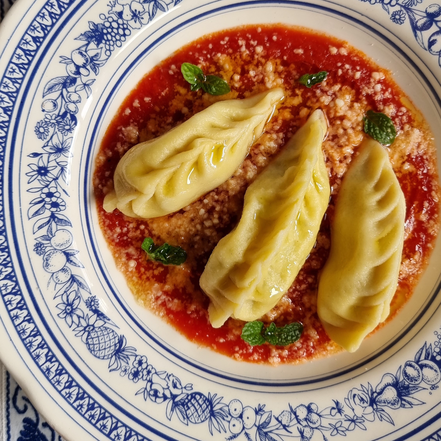|
Culurgiones are one of the most famous signature dishes from Sardinia and they are easily recognisable by their characteristic shape that looks like a wheat ear (spiga or spighitta in Sardinian language). The biggest difficulty people face when making this type of stuffed pasta is the closure of the pastry, which is what gives the culurgiones their distinctive appearance. This pasta shape itself represents the link between the agropastoral tradition of the wheat as a raw material for the production of fresh pasta and the skilful dexterity of Sardinian women. This type of ravioli are recognised by pasta makers from all over the world as one of the hardest pasta shapes to make. Culurgiones can now be found all over Sardinia but they originate from Ogliastra, a town in the central-eastern part of Sardinia. Serves: 4
Ingredients For the dough
For the filling
Method
Want to know more about culurgiones? Click here to read our blog!
2 Comments
Valerie
12/1/2024 05:24:36 pm
Step four for the tomato sauce doesn’t include any tomato ?
Reply
Valerie
12/1/2024 05:28:25 pm
I see it now! Must be blind!!
Reply
Leave a Reply. |
